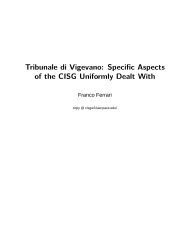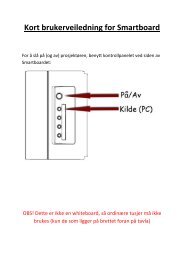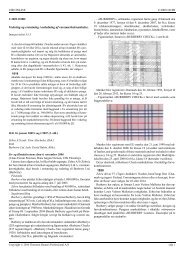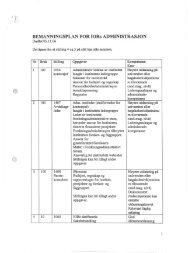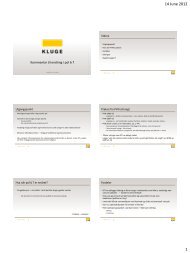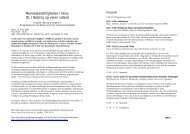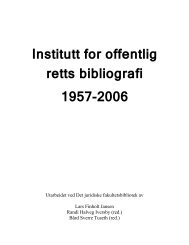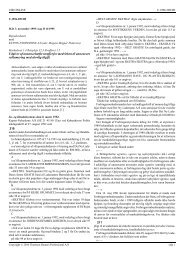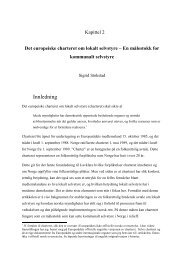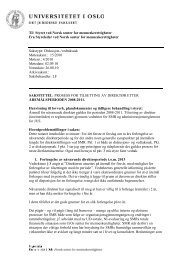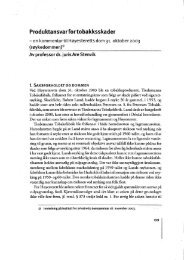Lee A. Bygrave (red.) YULEX 2002 - Universitetet i Oslo
Lee A. Bygrave (red.) YULEX 2002 - Universitetet i Oslo
Lee A. Bygrave (red.) YULEX 2002 - Universitetet i Oslo
You also want an ePaper? Increase the reach of your titles
YUMPU automatically turns print PDFs into web optimized ePapers that Google loves.
............................................................................<br />
44 Susan Schiavetta<br />
imported into a country, or by imposing excessive tariff duties on goods<br />
when they enter a country. Both examples indirectly curb market penetration,<br />
and ultimately result in discrimination between domestic and foreign products.<br />
The General Agreement on Tariffs and Trade (GATT) came into being<br />
in 1947, and outlined rules governing international trade. By regulating tariff<br />
and non-tariff barriers placed on goods traded on an international scale, it<br />
sought to produce a level playing field between its signatory states, thereby<br />
stimulating free trade.<br />
In due course, GATT formed a de facto organisation that was also, albeit<br />
unofficially, branded as “GATT”. 1 This organisation administe<strong>red</strong> GATT,<br />
and contributed immensely to its growth. In response to economic and political<br />
demands, several rounds of negotiations have taken place over the years<br />
which have amended and extended the original international trading rules. In<br />
particular, the Uruguay Round (Geneva 1986–1994) broadened the regime to<br />
cover services and intellectual property, via the adoption of the General<br />
Agreement for Trade in Services (GATS) and the Agreement on Trade Related<br />
Aspects of Intellectual Property (TRIPS). 2 On the whole, these documents<br />
provide the legal ground rules for international commerce which work<br />
on a contractual basis. The governments of the countries involved are bound<br />
by these rules and must therefore shape their trade policies within the<br />
boundaries of these “contracts”. 3 One of the most important adjustments to<br />
this trading system was the crystallisation of the de facto administrative body<br />
into a distinct international organisation, the WTO.<br />
2.1 The WTO<br />
The WTO came into being in 1995 via the framework of GATT, and thereby<br />
“[placed] the international trading system on a firm constitutional footing”. 4<br />
The salient duty of the WTO is to act as a medium for trade negotiations. 5<br />
Taking up this role, it acts in the same way as a lawyer advising clients as to<br />
their contractual rights and obligations, adding further support when the<br />
1 nd<br />
See further WTO, Trading into the future (Geneva: WTO, 2001, 2 ed), p 4, available at<br />
(accessed 08.10.<strong>2002</strong>).<br />
2<br />
Final Act Embodying the Results of the Uruguay Round (Geneva: GATT, 1993) [KZ5185<br />
1987 A3 1993]. The Final Act is like a covering note; all the other agreements are attached<br />
to this. Principally, the Agreement establishing the WTO acts as an umbrella agreement to<br />
GATT, GATS and TRIPS.<br />
3<br />
Supra n 1.<br />
4 AH Qureshi, The World Trade Organisation: Implementing International Trade Norms<br />
(Manchester: Manchester University Press, 1996), p 3.<br />
5 Supra n 1.



